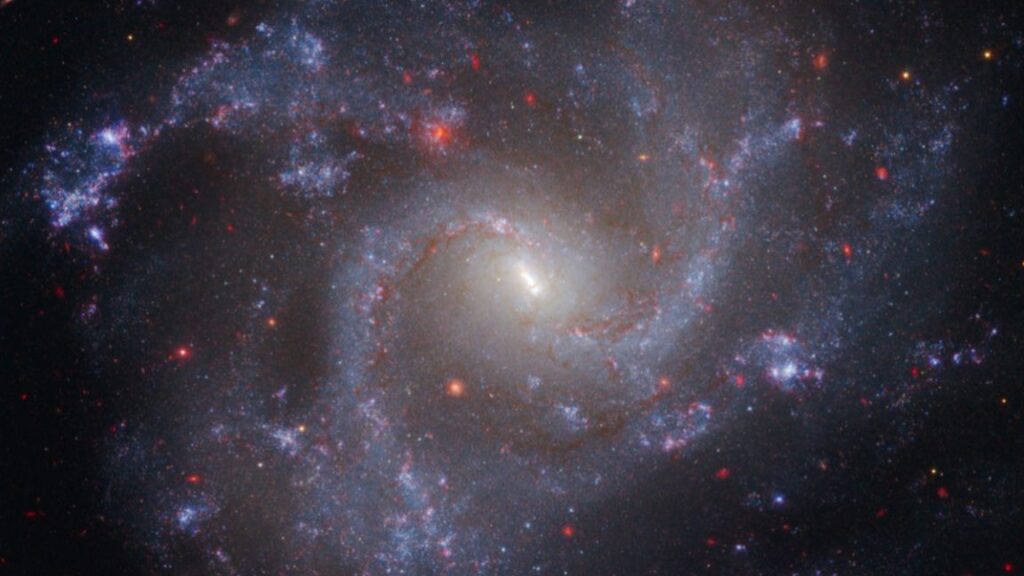
Earlier this year, JWST researchers reported on measurements built on last year’s confirmation based on Webb data that Hubble’s measurements of the expansion rate were accurate, at least for the first few “rungs” of the “cosmic distance ladder.” But there was still the possibility of as-yet-undetected errors that might increase the deeper (and hence further back in time) one looked into the Universe, particularly for brightness measurements of more distant stars.
Three views of NGC 4258 (Messier 106). The left and center images show the galaxy in visible light, while the right image is from the JWST in the infrared.
Credit:
ESA/WEBB, NASA & CSA
Additional observations of Cepheid variable stars—a total of 1,000 in five host galaxies as far out as 130 million light-years—correlated with the Hubble data helped JWST see past the interstellar dust that has made Hubble’s own images of those stars more blurry and overlapping. This enabled astronomers to more easily distinguish between individual stars. Those results further confirmed the accuracy of the Hubble data and allowed astronomers to rule out measurement error with a high degree of confidence.
A critical cross-check
This latest study serves as a critical cross-check to the April paper, using three different measurements to determine distances to galaxies known to be hosts to supernovae. “Cross-checking Hubble might sound prosaic, but the Hubble results demonstrate a profound tension in the Universe between how fast it is expanding now (measured by Hubble) versus the prediction from the standard model, LambdaCDM (calibrated by the Cosmic Microwave Background),” lead author Adam Riess, of the Space Science Telescope Institute at Johns Hopkins University, told Ars. “So Webb confirming Hubble means we are really seeing something amiss in the Universe.”
The new study, which includes data from two independent groups working to refine the Hubble constant, encompasses about a third of the full galaxy sample collected by Hubble. The authors used the distance to the galaxy NGC-4258 (aka Messier 106) as a reference point, since that distance is known. They used pulsating stars known as Cepheid variables to calculate distances and cross-checked their work with complementary distance measurements based on carbon-rich stars and red giants. They ended up with a Hubble constant value of 72.6 km/s/Mpc, very close to Hubble’s value of 72.8 km/s/Mpc.